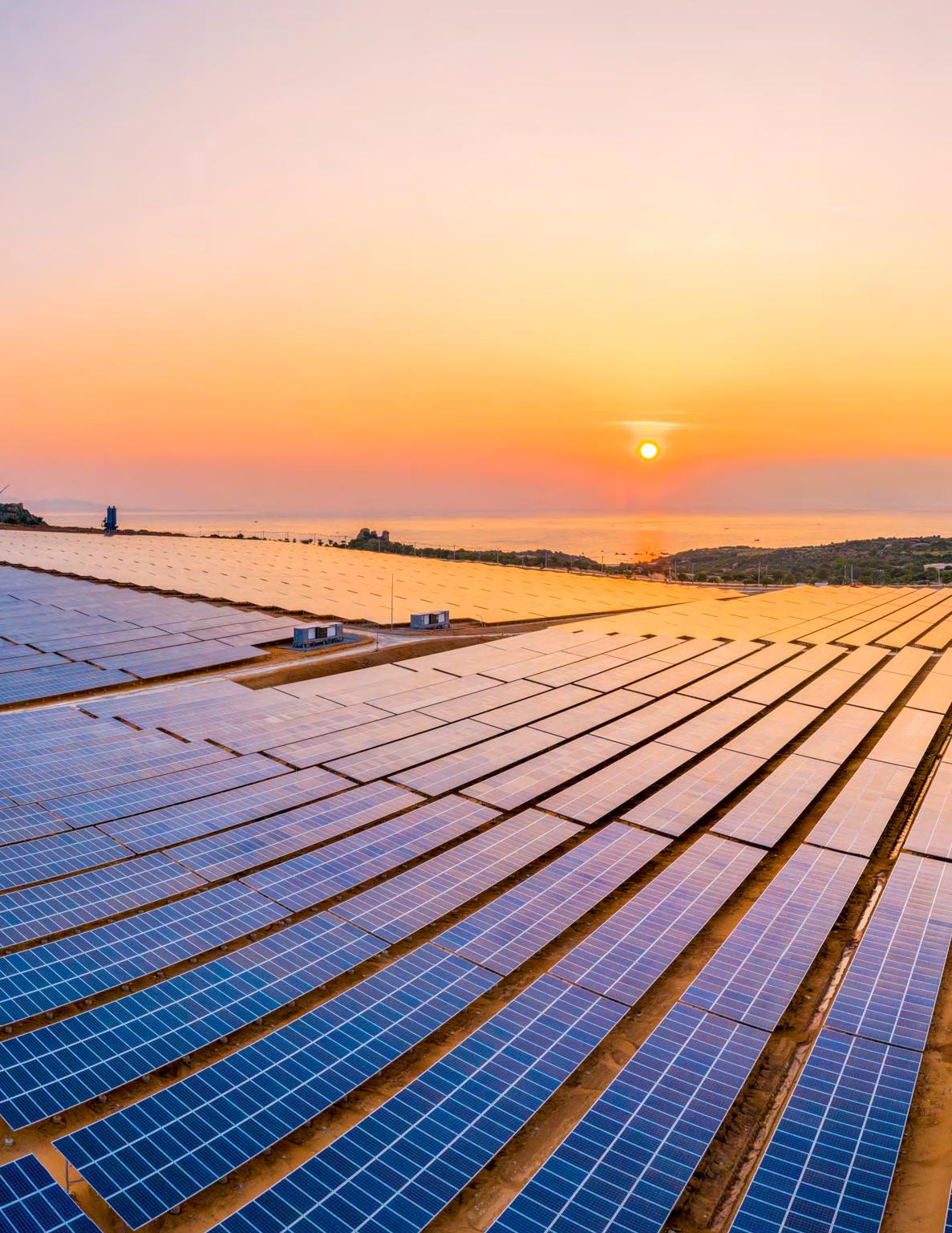
3 minute read
CURRENT STATE OF THE ESCO MARKET
The existing, technically competent ESCo sector in South Africa was initially stimulated by Eskom’s Integrated Demand Management (IDM) programme that was established in 2004. However, the IDM programme is now substantially smaller than it was at its peak and had failed to develop a self-sustainable and robust ESCo sector due to its dependence on subsidies. At present, the only external market-activity drivers are the 12L Tax Incentive scheme and building energy performance certificates.
Despite this, the ESCo market certainly exists and remains important. While it has adapted to the reduced Eskom IDM support and other energy sector changes, the market is still at an early stage and is waiting for a business accelerator.
Advertisement
The sector is characterised by a significant number of small firms and a handful of world-class larger ones. Of the 131 companies listed in the 2022 SANEDI ESCo Register, 36 provide a full ESCo offering, namely energy services and financing. Most of the others offer broader energy management services, including solar PV installations. As no aggregate turnover data is available, it is difficult to quantify the actual ESCo market size (excluding non-EE activities) and trends.
The sector is generally well governed with different entities playing different roles in the market. These include the Department of Mineral Resources and Energy (DMRE), SANEDI, Eskom and the Southern African Energy Efficiency Confederation (SAEEC) and its constituted associations, such as the ESCo Association of South Africa (EASA), the Black Energy Professionals Association (BEPA) and the Measurement and Verification Community of South Africa (MVCSA).
These institutions have implemented ESCo market development activities that present a solid foundation for expansion and growth. The best-established activities include well-designed measurement and verification (M&V) protocols and functional entities such as SANEDI and the National Cleaner Production Centre of South Africa (NCPC-SA) that provide capacity building, industrial energy audits and technical support. The SANEDI ESCo Register also provides market credibility and quality control.
Market components that are missing or only partially established include standardised contractual documents, a well-resourced ESCo association and tailored financing.
What The Market Needs
To further develop the ESCo market, an enabling ecosystem is needed that includes access to financing, as well as mechanisms that actively create demand for ESCo services to develop a self-reinforcing cycle. In contrast to previous interventions, market support needs to be sustained and consistent.


The results of a local market situational analysis suggest that the ESCo market needs:
• Active marketing of the ESCo concept and industry lobbying to support business development and sales, and create market demand.
• Increased confidence in the ESCo market through continuous capacity building, standardisation and robust accreditation.
WHAT IS A SUPER ESC o?
• Support for EASA to become more active and prominent.
• Enhancements to the SANEDI ESCo Register to make it more responsive to the needs of ESCos, clients, public authorities and other stakeholders.
International experience and the local market review indicate that institutional interventions or long-term programmes that change the operational approach of financial institutions (FI) yield better results than short-term subsidy or incentive-driven programmes. Consequently, two financial mechanisms, a Super ESCo and a dedicated EE debt fund, are proposed to address market barriers and to create catalytic and multiplier impacts. It is noted, however, that these do not exclude other interventions, including certain shorter-term financial mechanisms.
The Super ESCo leverages the advantages of both guaranteed savings (GS) and shared savings (SS) contracts, while avoiding their main disadvantages. The task of procuring finance is the responsibility of the Super ESCo, thus freeing both clients and ESCos of this burden; in fact, the essence of the Super ESCo arrangement is that the responsibility of seeking finance falls on a third party, which is the Super ESCo.
A Super ESCo acts differently to a fund or credit line. The latter limits its activity to a financial role by acting as a lender with technical expertise. In contrast, the Super ESCo takes on the operational role of delivering EE by acting as a contractual party in an energy performance contract (EPC). In other words, the Super ESCo takes on the operational role of delivering EE, while a fund or credit line limits its activity to a financial role.
South Africa has many ESCos able to perform a wide number of activities and master several technologies. However, among these Tier-1 companies – as they are classified in the SANEDI Register – only a few are big enough to act as integrators of complex projects that entail implementing and guaranteeing a diversity of EE measures, such as lighting, HVAC, pumps and motors.
As a first step, the Super ESCo can facilitate the creation of new ESCos through capacity building workshops aimed at enabling small companies to diversify and new companies to operate as ESCos much more rapidly.
Technical assistance (TA) and due diligence can also be channelled through the Super ESCo when smaller ESCos conduct investment-grade audits (IGAs) and prepare feasibility reports. TA can furthermore include project integration, M&V and project implementation best practices. Partnerships between large and small companies for the purposes of tendering will be viewed favourably, while aggregating smaller ESCos could lead to new, larger










